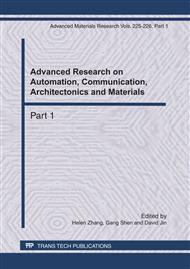p.720
p.725
p.729
p.734
p.739
p.743
p.747
p.753
p.757
Development Strategy for Requirement of ICTs in Engineering Learning of Comprehensive Regional Higher Education Institutes of PRC
Abstract:
Information and communication are key to the ability of the organization to respond to change. Information and communication technology (ICT) penetrates into all aspects of economy. Now graduate of comprehensive regional higher education institutes (CRHEIs) are main source of workers. Those CRHEIs should improve their quality of learning for their student being good workers. In this paper, we analyses ICT–based learning issues from undergraduates preparing for postgraduate entrance exams and undergraduates seeking a job in Linyi University. The methodology for carrying out the tasks mainly contains questionnaires according to normative Delphi technique. The research provides information and communications strategy which CRHEIs authorities should take in order to properly integrate ICTs in their CRHEIs and get their benefits.
Info:
Periodical:
Pages:
739-742
Citation:
Online since:
April 2011
Authors:
Price:
Сopyright:
© 2011 Trans Tech Publications Ltd. All Rights Reserved
Share:
Citation:


